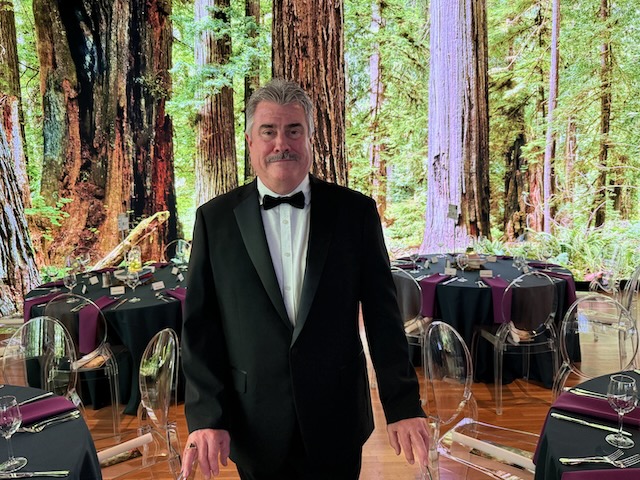Over the next 8 weeks, Barking Squirrel Media will share the storytelling secrets of Story Mythos by Shane Meeker. Who knows more about brand storytelling than the Chief Storyteller for P&G? I love this book and have found that it fills the gap between storytelling books meant for Hollywood film makers and the video stories meant to promote corporate advertising. I’ve read countless books and articles over the years to sharpen my own storytelling skills, but I don’t have an hour and a half to tell a story like feature film makers. Meeker provides answers that all commercial film makers seek. How do I apply the classical story arc of the hero’s journey, the framework that undergirds every great novel and movie, to a 2-3-minute corporate video? Few books answer such a question in practical ways. Meeker does. Here are the five story ingredients of Shane Meeker: Hero, Obstacle, Treasure, Climax, Transformation. Buy the book! You won’t regret it. https://www.amazon.com/StoryMythos-Movie-Better-Business-Stories/dp/1945793384/ref=sr_1_1?crid=269LQJ7DKXA7A&dchild=1&keywords=storymythos&qid=1592436833&s=instant-video&sprefix=storymythos%2Cprime-instant-video%2C173&sr=8-1
- Hero
Stories are about people, not plots or processes, not information or technology. A story is about a person, the hero through whose eyes we see the world and the problems he must conquer. We must relate to the hero in some way and even like him. Meeker says “if you don’t care about the hero or their mission, the story is over.” The hero makes us care about something and causes us to feel towards somebody. At some level, we relate and connect to the hero. When a brand’s story connects with their customers at an emotional level, that creates empathy for the brand. Your company is not the hero, your customer is the hero of your story. As Meeker so rightly points out, stories influence emotions and emotions influence decisions, therefore corporate storytelling is a powerful medium to build relationships with your customers, grow your brand and drive sales.
- Obstacle
All stories present the hero with significant obstacles, challenges, or problems. If the hero doesn’t face a formidable foe (whether it is a person, an issue, or technology), there is no story. The reason we keep reading or watching is because we have an internal need to see how the conflict will be resolved. Just as we identify with the hero, we can relate to his problem, because in some way, it is our problem. It’s crucial in corporate storytelling to identify the problem our customers face and make that central to the cinematic story we tell them. When a business video simply brags on how great they are, there is no reason to keep watching. We don’t like being sold to, so we tune out or stop watching. But if the hero is facing a problem that we relate to, we are hooked and keep watching. We feel understood by the company because they feel our pain.
The bigger the problem the hero faces, the more engaging and memorable it will be. Meeker uses a marvelous example of this in his book. What if the Jaws movie was about a sheriff at a beach town that had a two-foot barracuda swimming in shallow waters, and he hired a fisherman to catch it? The fisherman did get sunburned in his little rowboat and spilled his tackle box in the water, but he caught the barracuda and fried it up that evening for dinner. Would you want to watch that movie? NO! The problem is insignificant and incapable of igniting our imagination. Make your business videos about the big problems that your customers face, and your customers will make an emotional connection with you. Remember what we said earlier. Emotions influence decisions. Emotionally engaging videos are crucial to driving action in corporate storytelling videos. One note of caution, the story MUST be authentic and not an exaggeration. Nothing will turn off your audience faster than misunderstanding their struggles (unless it is obvious that you are exaggerating the struggle for comedy and the audience is in on the joke).
- Treasure
“Every hero needs a proper motivation, a treasure worthy of the journey and of their sacrifice” (Meeker).
Effective video storytelling requires knowing what your hero wants and what will motivate her to get it. Meeker compares this need for motivation to cost-benefit analysis in economics. Does the benefit of a decision outweigh the sacrifice required to get what the hero wants so desperately? I remember as a young teenager wanting a Martin guitar more than anything in the world. But my dad wisely told me I would have to pay for it myself. I realized that the only way I could generate this kind of money would be through real sacrifice. So, I mowed yards all summer and sold my prized Honda 70 motorbike. But it was so worth it.
“For us to spend our time and energy, there must be something for us to gain, something emotional, spiritual, physical, mental, or financial – there must be a reward” (Meeker). The Tiffany brand understands our need to commemorate weddings, anniversaries and holidays with fine gems and diamonds. Yes, it requires financial sacrifice and effort, but the emotional and physical rewards of that distinctive Tiffany box make the sacrifice worth it. When our brand storytelling understands the needs and problems our clients face and we offer a reward that makes their sacrifice worth it, we have a cinematic story that can build online reputation and grow a company.
- Climax
So far, we have a hero who has a big problem and is willing to sacrifice to conquer that problem, all in order to get the treasure. Now we have the beginnings of a captivating story. The secret at this stage is making sure each new scene in the film is more emotionally compelling than the previous. This is crucial, otherwise the audience is let down and will find a new video that keeps them engaged. If the hero’s problem is solved in the first 30 seconds of a 2-minute video, why would we continue to watch the rest. Meeker points out that it took seven Harry Potter books before Harry fought Voldemort and three Lord of the Ring movies before Frodo and Sam destroyed the ring.
Though it is beyond the scope of this blog post to explain the many components of building towards a climax, there are two things you should consider: escalating conflict and the role of guides. When you are creating a 2-hour block buster movie, you have a lot of time to develop a series of mounting problems and obstacles. In the commercial world of long play video storytelling we may have two to three minutes and that seems to decrease every year. What I find helpful is to think in terms of three types of problems a hero faces: external, internal, and philosophical conflict.
The direction of conflict moves from external physical obstacles to internal mental problems to deep philosophical (even spiritual) conflict. The story begins with external obstacles because it is the easiest to observe and we don’t know much about the hero’s internal life yet. As the hero overcomes the external problems, his original way of thinking is confronted and challenged. In a Hollywood film, tensions escalate scene by scene, until it seems as though the hero is brought to the brink of death (literally or metaphorically). The only way out is profound introspection that leads to a shift of his entire worldview.
Obviously, this level of drama cannot be accomplished in a corporate video. However you can show how you help your clients resolve their most obvious problems (external), how you provide them with a new way of thinking (internal) about doing business and how what you provide them makes a real difference in their world, in the community and in real people’s lives (philosophical).
Every hero needs a guide who will come along side to help her overcome her problems and get what she really wants. I have already written about this in other blog posts so it will suffice to say, the brand itself is the guide. We don’t seek to be the hero of our customers stories, rather, we want to help them become the best possible hero of their own story. When you are thinking about designing the script for commercials and business videos, make sure you are not the hero. Meeker provides numerous examples of how P&G always makes the people who use their products the hero. Tell great stories that make your customers the hero and you focus on being the best guide or helper you can be.
- Transformation
The tremendous challenges that the hero faces force him and those around him to change. If I had to summarize great storytelling in one word, if would be Change. Overwhelming conflict and obstacles require a change of thinking, acting, and being in the world. Getting what the hero wants necessitates this change, otherwise the toolsets that he had in the beginning of the story would have had no problem overcoming the obstacles he faced and thus, no conflict that requires a solution.
Brand storytelling will inspire customers and clients when our stories demonstrate how our products or services will change their lives for the better and in some small way, make the world a better place.
I personally love iPhones and I can’t imagine life now without them. Apple has transformed how I connect with people, consume news and content, and how I run my company. Yes, the iPhones are expensive, but the lifestyle they offer me is worth the expense. For decades I was an avid fan of PC’s and Windows. They were cheaper than Macs and I got more power for the buck (so I thought). I was evangelical for the Windows cause! And then the Apple Video iPod came out. I could carry many movies, TV series, and a music library in my pocket 24/7. I could watch my Battlestar Galactica series anytime, anywhere. The Apple story was not about video technology and large storage capacity. It was a story of convenience and lifestyle. Apple truly transformed my life. I got an emotion rush (treasure) from just using the product. From that day forward, I never bought another PC product. Everything I own and our company owns is Apple. The product and the story they told was transformative in every way. Apple’s story became “my story.”
Conclusion
Brands tell stories to change the thinking and behaviors of our customers and clients. Storytelling is hardwired into the human psyche. We need it and want it. Tell a story using Shane Meeker’s Story Recipe and you will give your audience what they long for and grow your business at the same time. Tune in next week for the next installment of Shane Meeker’s storytelling secrets!
by Dr. David K, Bray


